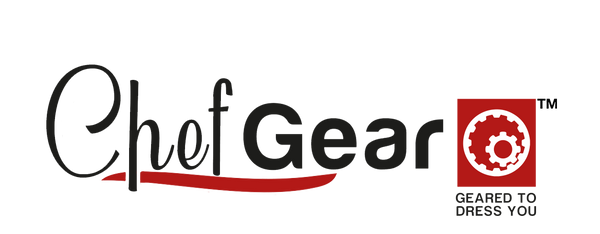Become a More Intuitive Cook by Mastering Culinary Ratios

At Chef Gear, we know that great chefs rely on more than recipes. They rely on a deep understanding of the building blocks of food. Becoming an intuitive cook isn't about guessing - it’s about understanding the building blocks. Mastering a few essential culinary ratios can unlock a whole new level of creativity, freedom, and confidence in the kitchen to create your own dishes - no recipe required.
Whether you're a student chef or a seasoned professional, mastering ratios is one of the best tools for taking your skills to the next level.
What Are Culinary Ratios?
Culinary ratios are basic formulas that govern the balance of ingredients in foundational recipes. Instead of relying on fixed measurements, chefs use ratios to adjust portions, scale recipes up or down, and improvise with confidence.
Think of it this way: a basic bread dough doesn’t need a recipe - it just needs a 5:3 flour-to-water ratio (plus yeast and salt). Once you know the ratio, the rest is instinct.
Why Mastering Ratios Makes You a Better Chef
Consistency Across the Board
Whether you're in a restaurant or catering kitchen, knowing your ratios helps you deliver reliable results, even when portions or ingredients change.
Freedom from Recipes
Once ratios are second nature, you can cook intuitively and troubleshoot on the fly. No recipe? No problem.
Scalability Made Simple
Working in large volumes? Scaling down for a private dinner? Ratios help you adjust quantities with ease - no calculator required.
Greater Culinary Creativity
When you understand the structure behind the dish, you can start to tweak it - swap flavours, adjust textures, and create entirely new recipes.
Essential Culinary Ratios Every Chef Should Know
Here are some of the most useful culinary ratios you can memorise and build from:
1. Bread Dough: 5:3 (Flour:Water)
This basic ratio creates a workable dough. Add a touch of yeast and salt, and you've got a classic loaf.

Example:
500g flour → 300g water → + yeast & salt
Add olive oil and herbs? You’ve got focaccia.
2. Cake Batter: 1:1:1:1 (Flour:Fat:Sugar:Eggs)
This is the base for many classic sponge cakes. Equal parts by weight = balanced structure and sweetness.

Example:
200g flour, 200g butter, 200g sugar, 200g eggs
Change the fat and flour and you’ve got muffins or cupcakes.
3. Cookies: 3:2:1 (Flour:Fat:Sugar)
This formula helps create cookies with crisp edges and a chewy centre.
Example:
300g flour, 200g butter, 100g sugar
Want softer cookies? Add an egg or more sugar. Crunchier? More flour.
4. Pancakes: 2:2:1 (Flour:Liquid:Eggs)
Great for light, fluffy pancakes or a base for crêpes and waffles.
Example:
200g flour, 200g milk, 1 egg
Add more liquid for thinner pancakes or more flour for thicker ones.
5. Pie Dough: 3:2:1 (Flour:Fat:Water)
The golden rule of flaky, buttery pie crusts.
Example:
300g flour, 200g butter, 100g cold water
Chill everything and handle gently - perfect crust every time.
6. Pasta Dough: 3:2 (Flour:Eggs)
Fresh pasta from scratch with just two ingredients.

Example:
300g flour, 2 eggs
Knead, rest, roll, and cut - simple and traditional.
Turn Knowledge into Intuition
Ratios are the foundation of technique. Once you understand them, you can begin to experiment.
- Use the cake ratio to invent your own flavour combinations
- Adjust the bread ratio to account for different flours or hydration levels
- Customise the cookie ratio for texture, sweetness, and shape
The more you work with ratios, the more natural they feel. You'll begin to “see” the structure of a dish before you cook it - and that’s the mark of a truly intuitive chef.
Equip Yourself for Precision
Of course, intuitive cooking still relies on good tools. At Chef Gear, we support chefs with gear that enhances their skills - from perfectly tailored chef jackets to durable chef accessories, and everyday uniform essentials to keep you sharp, safe, and confident in the kitchen.
So next time you reach for a recipe, pause. Ask yourself: what’s the ratio? And then -make it your own.


0 comments